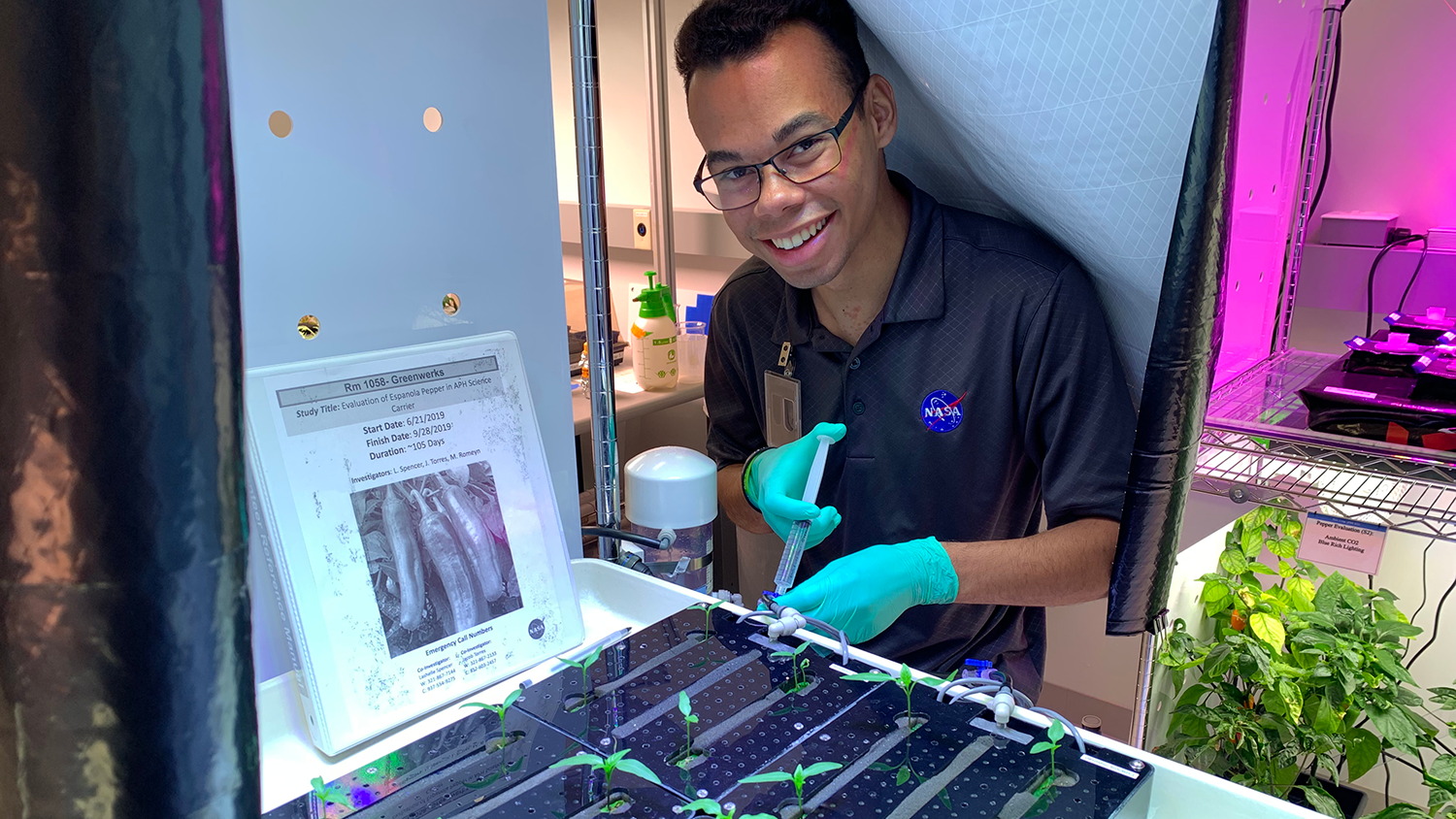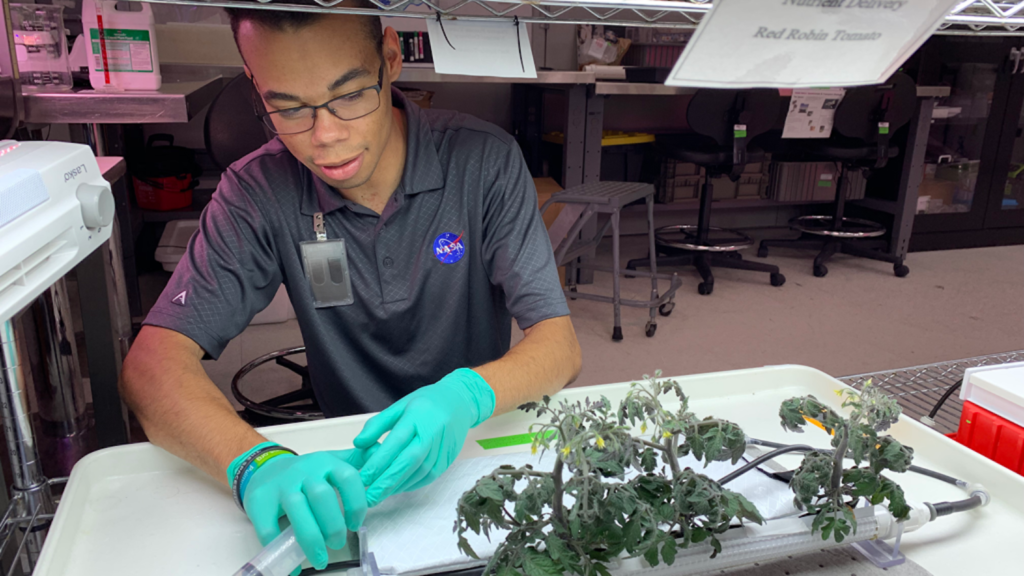One Giant Leaf for Mankind
Joseph Taylor is helping NASA learn how to grow vegetables in space to feed astronauts journeying to the moon and Mars.

With plans to establish a permanent base on the moon’s surface in the next decade or so, NASA is one step closer to sending humans to Mars. But a mission to the red planet will likely take years to complete, begging the question: What will astronauts eat during their interplanetary voyage?
The answer: Vegetables, according to Joseph Taylor, a senior at NC State’s College of Natural Resources and College of Agriculture and Life Sciences.
Taylor, who is double majoring in environmental sciences and plant biology, recently spent the summer interning at NASA’s Kennedy Space Center in Florida. As one of nine students selected to assist the agency’s food production team, Taylor’s main task was to identify candidate crops for missions to the moon and Mars.
“I propagated potential food crop candidates and evaluated their growth while also monitoring other related ongoing experiments,” Taylor said. “More specifically, I helped set up growth chambers, prepare growth media and nutrients, perform daily checks on experiments and collect relevant data. I also did the occasional taste test.”
Gardening in Space
Today’s astronauts maintain healthy, balanced diets by eating freeze-dried prepackaged meals, according to Taylor. But these meals are weighty and would take up too much room on an interplanetary spacecraft. They also lose nutritional value over time, leaving astronauts vulnerable to vitamin deficiencies and other health issues.
Seeds, on the other hand, are much more compact. That’s why scientists at Kennedy Space Center are experimenting with how to grow plants and vegetables in simulated space environments. It’s a task that comes with many challenges, the most obvious of which is the lack of gravity.
Because plants are highly responsive to Earth’s gravity, their stems grow upward towards the sun while their roots grow downward into the soil. Some plants, however, have been shown to retain their Earthly orientation and grow away from light when sprouting in microgravity aboard the International Space Station.

Water also behaves differently in microgravity, according to Taylor. Instead of flowing like it does on Earth, water clumps together like a blob and sticks to surfaces. This effect causes water to coat and drown the roots of plants.
To solve these challenges, NASA is working to develop automated systems that can safely and sustainably provide water and other essential resources to plants aboard spacecraft.
“Astronauts are very busy, and we don’t want them hand watering everything,” Taylor said. “That’s what they do now on the International Space Station. All of the plants are watered individually and it takes a lot of time.”
Finding a Way
During his internship at NASA, Taylor’s typical schedule included filling out log books on each experiment and recording variables such as temperature, carbon dioxide and humidity levels. He also attended weekly “lunch and learn” sessions to hear about past and current research initiatives at Kennedy Space Center.
Ultimately, Taylor said the internship was “very eye-opening,” providing him with plenty of hands-on research experience and professional connections.
Taylor added that his decision to apply for the internship was largely driven by his passion for space exploration and his dream of someday working at NASA, both of which were inspired by the Curiosity rover’s landing on Mars in 2012.
“I’ve always been interested in space,” he said. “But after watching the Curiosity rover landing, I started to really think about it as a potential career.”

Upon enrolling at NC State in 2015, Taylor joined the university’s High-Powered Rocketry Club. The group gives undergraduate students the opportunity to research, design, construct, test and launch industry-standard rockets. Every year, the group competes in the Student Launch event, which is sponsored by NASA’s Marshall Space Flight Center.
“While I didn’t end up pursuing a career in aerospace engineering, I wouldn’t be where I am today without the High-Powered Rocketry Club,” Taylor said. “Through the club, I made valuable connections to NASA employees and learned important skills such as 3D modeling and rapid prototyping and fabrication of designs. I wouldn’t have gotten the internship at NASA without this club.”
Following graduation this fall, Taylor said he hopes to return to NASA for another internship and then pursue a graduate degree at NC State.
- Categories:


